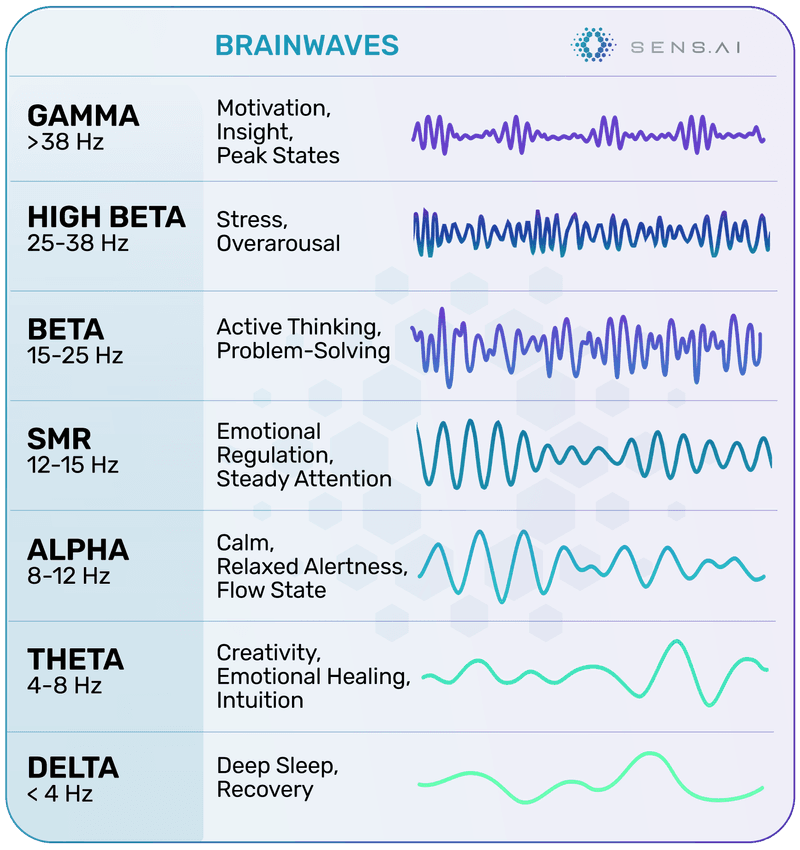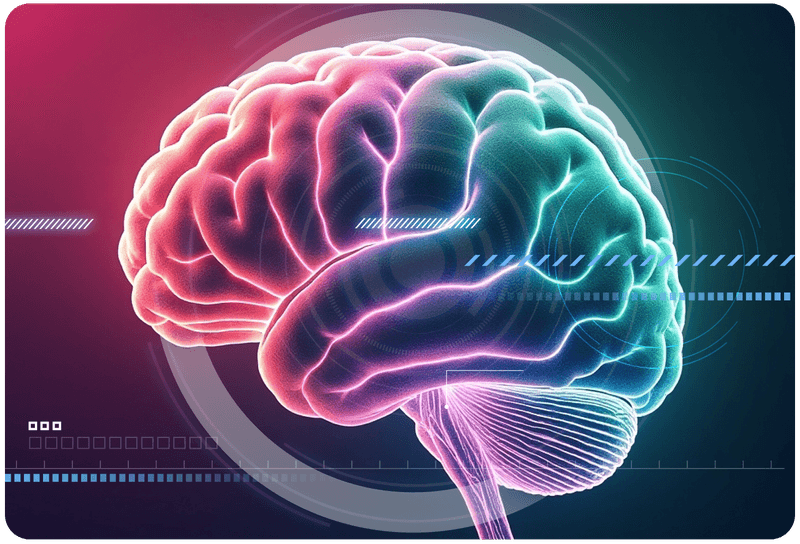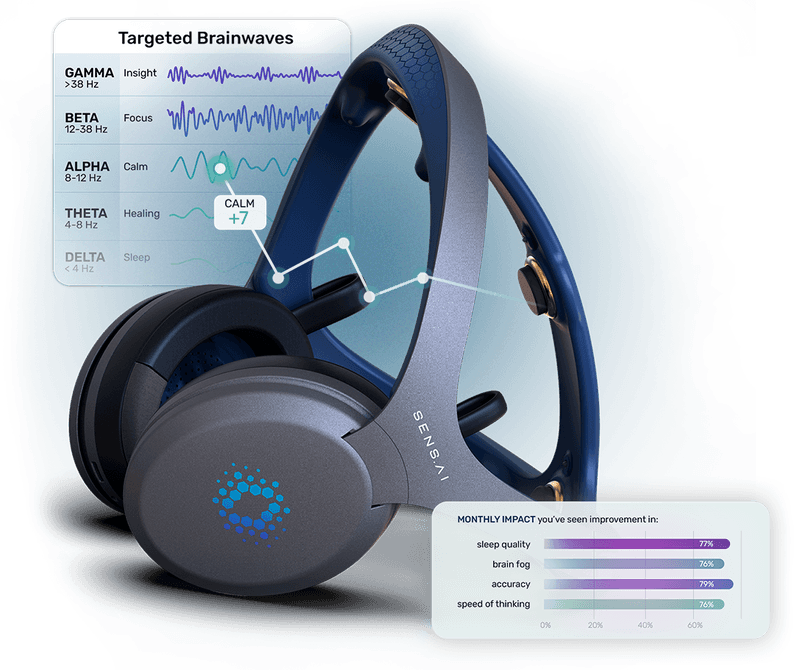Neurofeedback
Learn from Your Own Brain

Neurofeedback is not meditation. It’s not stimulation. And it’s not just watching your brainwaves. It’s a real-time learning system that helps your brain discover and reinforce healthier patterns — faster than conscious thought, through its own feedback loop.

What Neurofeedback Is — and Isn’t
Neurofeedback gives your brain live, moment-by-moment information about its own electrical activity (EEG). This feedback—often in the form of changing sounds, visuals, or animations—helps your brain recognize when it’s in a desirable state and encourages it to stay there.
This is not passive monitoring, like EEG headbands that display brainwave states. And it’s not stimulation, which pushes the brain externally. Neurofeedback is your brain learning from itself—through guided practice.
Why it Matters
You might be able to temporarily force a mental state change with substances or even neurostimulation technology. But what you really want is to train for it and develop the skill to shift on your own. Neurofeedback gives your brain the opportunity to practice: staying present without drifting, returning to calm after stress, and balancing alertness with ease, Over time, these improvements become more than temporary states. They become traits—long-lasting, resilient brain patterns you can carry into daily life.
How it Works
During a neurofeedback session, sensors read your brain’s electrical activity (EEG) in real time. That signal is analyzed and transformed into feedback—often a sound that gets louder when your brain is in the target state and quieter when it’s not. Your conscious mind doesn’t need to do anything. Your brain is tuned to patterns—and it naturally starts repeating the ones that earn positive feedback. The result? Subtle, lasting shifts in how your brain functions, without conscious effort or overthinking.
Your Brain, Learning Like a Thermostat
Imagine a smart thermostat learning your ideal room temperature. It doesn’t need to ask—it just adjusts automatically based on feedback. Neurofeedback works the same way: your brain senses the feedback and fine-tunes itself to operate more effectively.
Why it Works
Just as a mirror helps you adjust your posture, neurofeedback gives your brain real-time feedback — so it can fine-tune itself. This isn’t about watching your thoughts or tracking brainwaves. It’s about creating a feedback loop so fast and subtle that your brain starts learning below conscious awareness.
This process relies on operant conditioning and neuroplasticity — your brain’s natural ability to adapt. With regular sessions, these gains don’t just change your state. They strengthen your traits.
Ready to try Brain Training?
Whether you want better sleep, sharper focus, or to evolve into your highest potential—Sens.ai was built for your journey.
What Neurofeedback Trains
Neurofeedback doesn’t tell your brain what to feel—it helps it discover more balanced ways of operating. An ideal system would be able to train across all the brainwave bands (delta through gamma). Depending on the brainwave bands and protocols used, neurofeedback can train key capacities such as:
Focus and Alertness

Increasing sensorimotor rhythm or beta
Emotional Regulation

Stabilizing alpha or reducing high beta
Deep Calm and Presence

Strengthening alpha or theta
Cognitive Flexibility

Shifting between states with ease
Different brainwave frequencies correspond to different mental states. With practice, neurofeedback strengthens your brain’s ability to shift into those states when you need them—on demand, without relying on external cues. If neurostimulation is like a spark, neurofeedback is like strength training. It doesn’t just activate your brain—it teaches it to perform better on its own.

